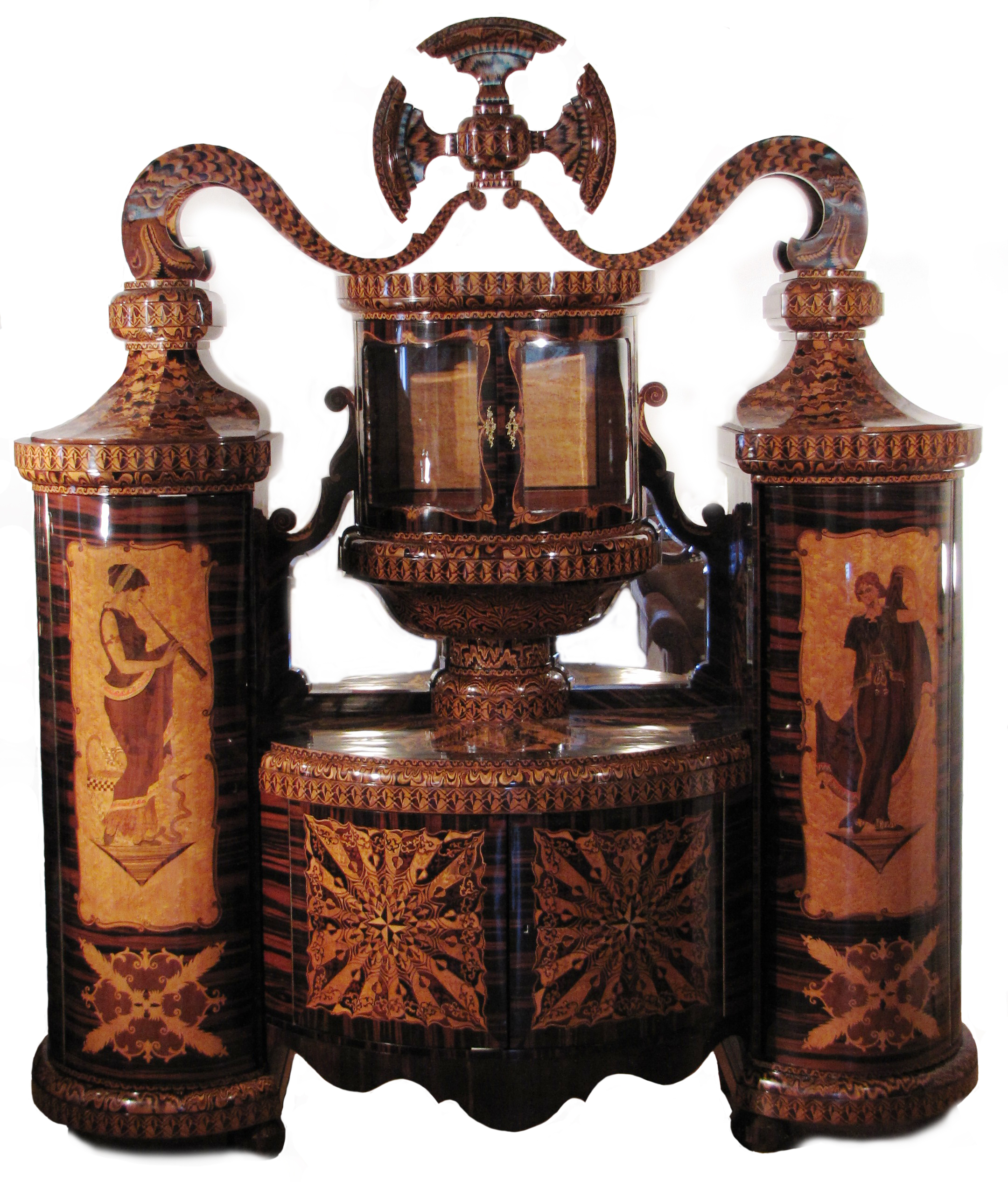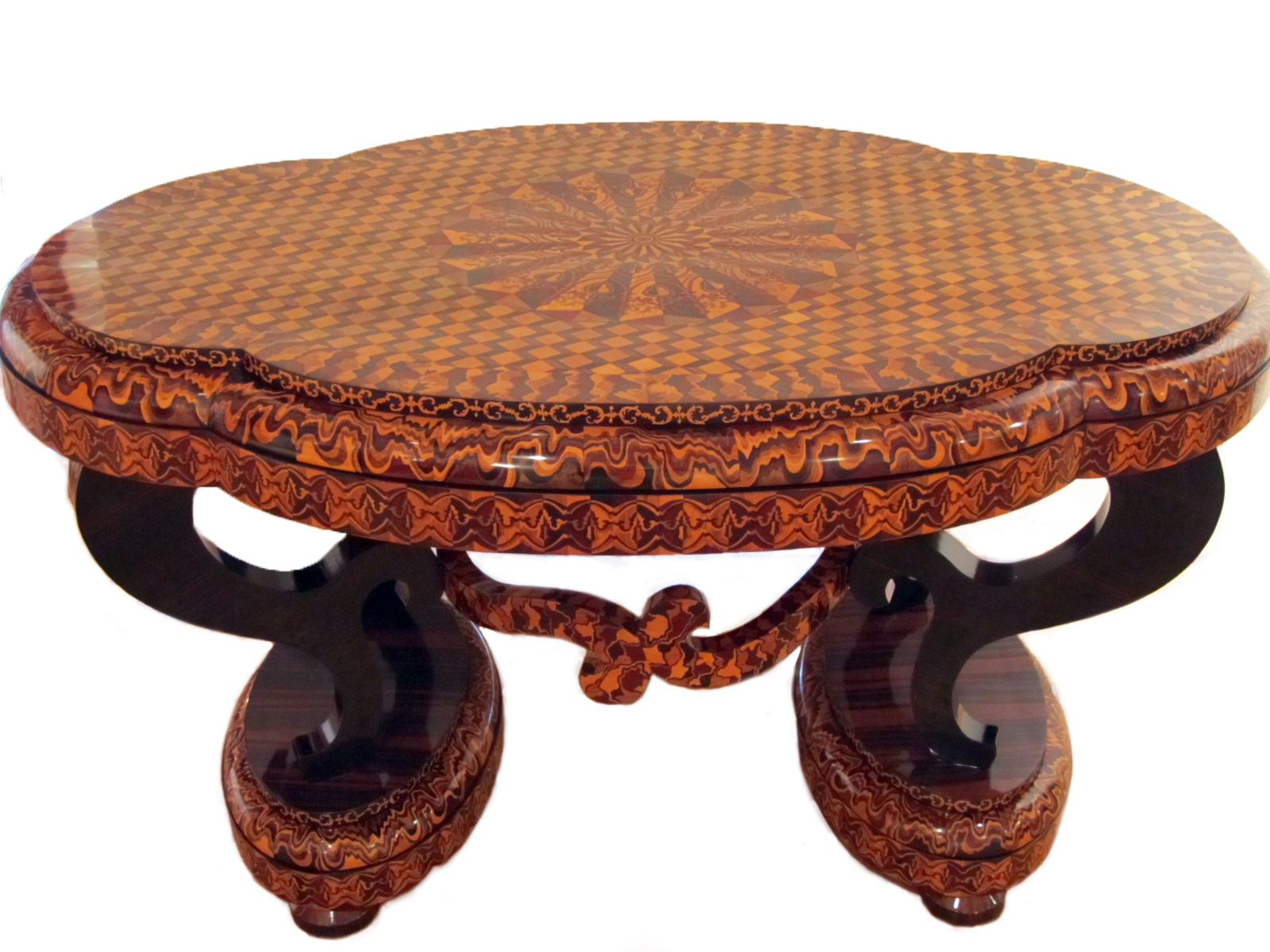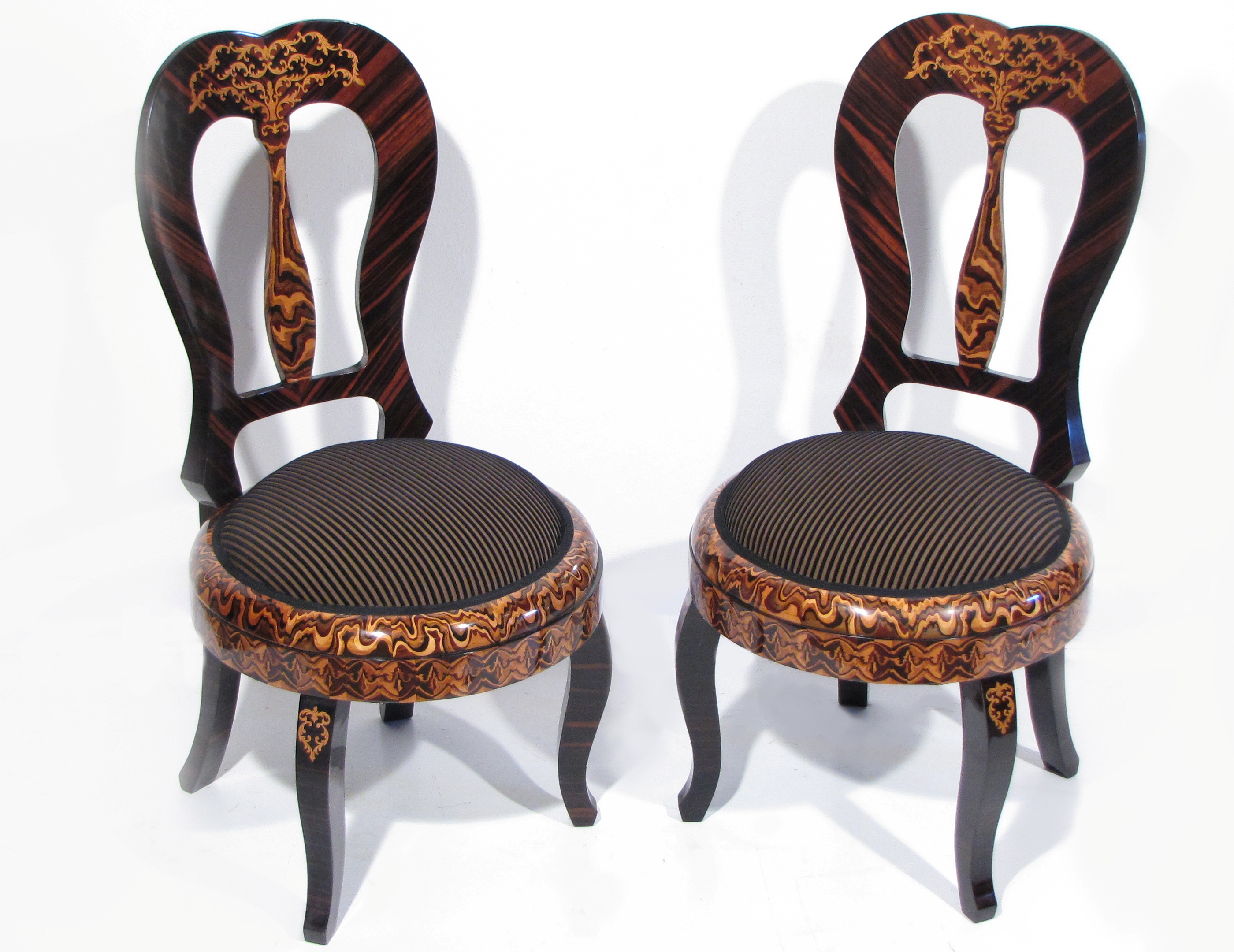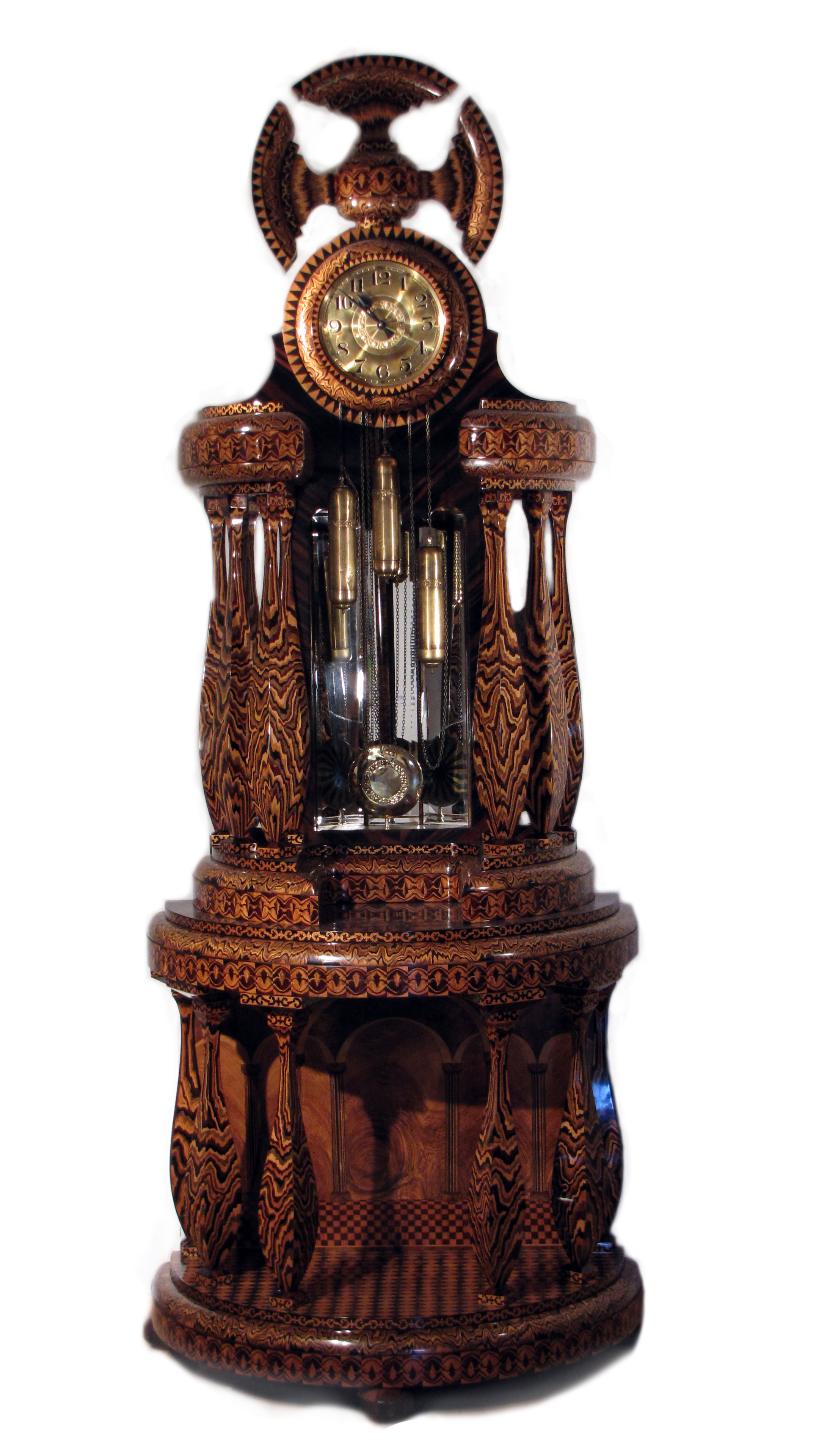Searching for the architect of a unique Art Deco furniture

Recently we completed the renovation of an unusually interesting set of modernist furniture. We professionally do restoration for a quarter of a century, but with such special furniture we haven't met yet. The piece is unique not only for unusual combinations of decorative elements and overall opulence, but also precise, demanding and in many respects unusual craftsmanship. In addition to the total renovation our current owner asked us to finding some information about the origin and production of architectural or desing of their creators. We had information only from the owner, who bought a villa in Kosice also with mentioned furniture that was made to order. Upon further search of information, we found that the owner of the villa Hungarian Jewish during the war became victims of the holocaust and the house, like many other splendid buildings changed owner, according to the regime. Owners have changed here. Furniture was the only thing in interiors preserved. Impressive dimensions of hoosier had prevented his eviction from the building. We also managed to refine the dating of production, but the manufacturer or a workshop, we could not be traced. We focused on finding information about the possible value of the entire ensemble. An invited expert couldn´t determine the price because the file is so special that it had nothing to compare with and he could only account the complexity and labor intensity of production.


We sent out e-mails to several Slovak experts on furniture, to find the author of the piece. Everyone, without exception, praised the craft, extravagance and the opulence of a piece of furniture, and they agreed that nothing like this had ever seen. They pointed to mix style, someone highlighted hints of Hungarian Biedermeier, others "furious historicism", neobiedermeier and decorativism early 20th century, and another Russian influences. With David Fiala they agree that it is very untypical use more ornamental forms on one piece. Quirky decor of furniture and the choice of materials and unusual work show certain similarities with the works of modernist Hungarian Lajos Kozma, who worked in the prewar period. Kozma studied in Budapest, and after 1906 he joined a group of young designers who are inspired by the Hungarian and Romanian folk art and in this spirit suggested furniture. He sought patterns , inter alia, in the Baroque period and in a particular way,he was linking traditional and luxurious wood and other materials. He used colors typical of art deco and his work is evident in the popularity of the Wiener Werkstätte. It is documented that he was in Kosice, where he designed buildings and interiors for the Jewish community. After the post-war period works of Lajos Kozma no longer known. It remains only consider whether the fate of the Jewish owner and creator of furniture not ended, ironically,
so for now about finding a lost past.
David Fiala





